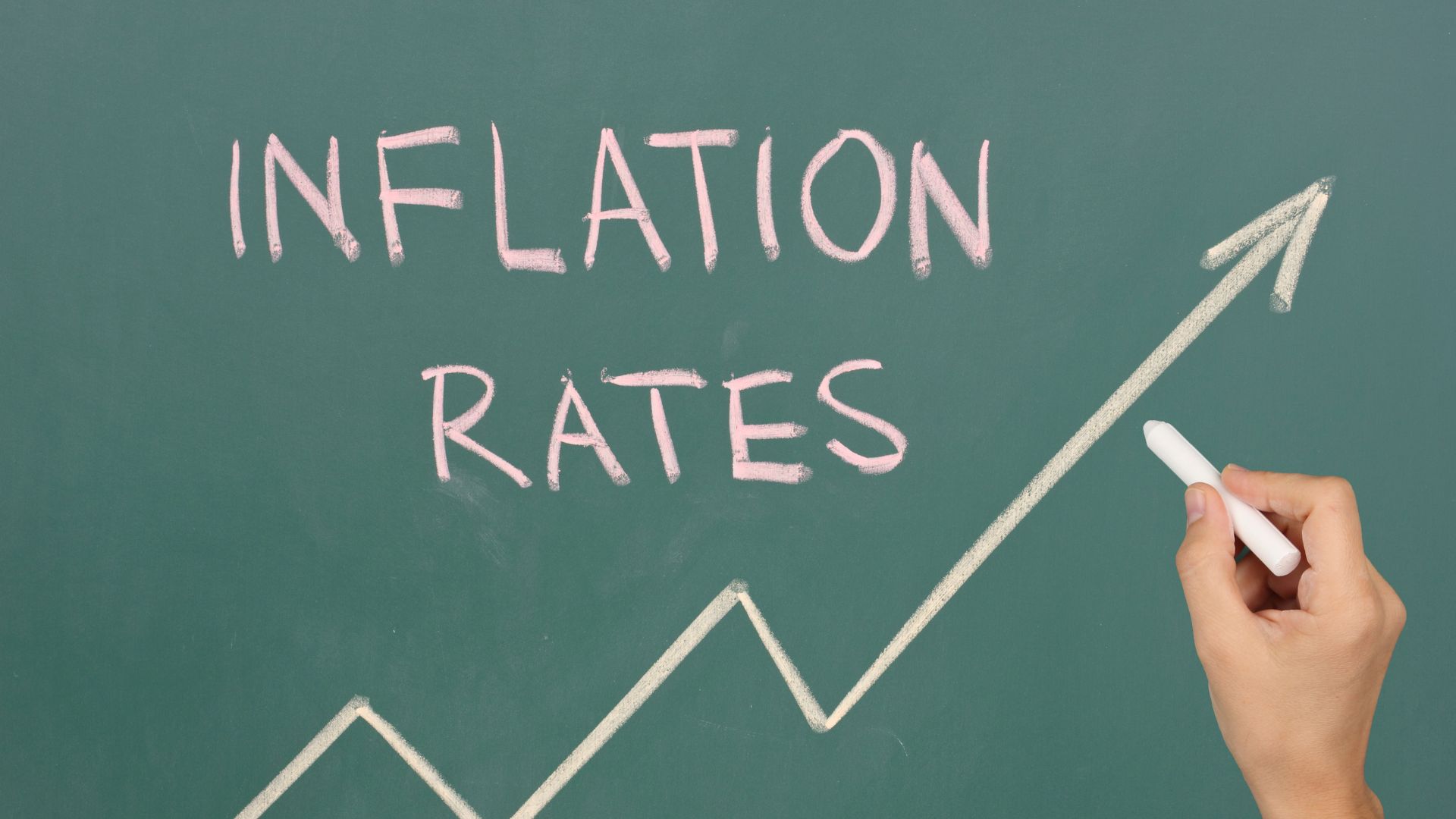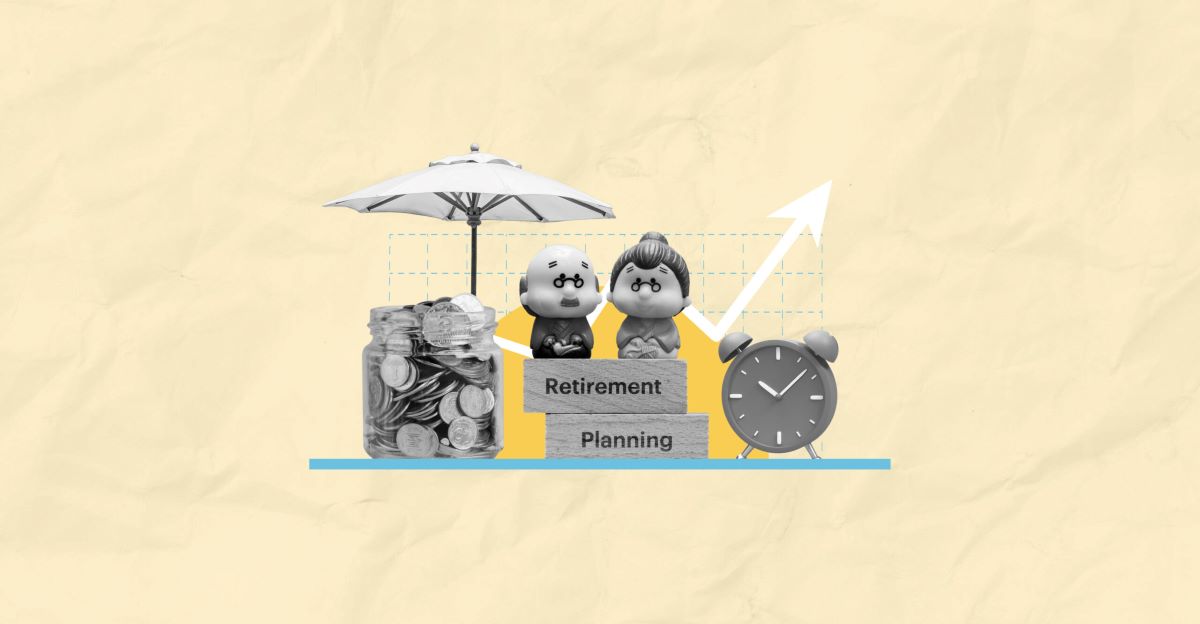Home>Finance>What Rate Of Return To Use For Retirement Planning


Finance
What Rate Of Return To Use For Retirement Planning
Published: January 21, 2024
Discover the optimal rate of return to use for retirement planning in the field of finance. Ensure a prosperous future with expert advice and strategies.
(Many of the links in this article redirect to a specific reviewed product. Your purchase of these products through affiliate links helps to generate commission for LiveWell, at no extra cost. Learn more)
Table of Contents
- Introduction
- Why Rate of Return is Important in Retirement Planning
- Factors to Consider when Determining the Rate of Return for Retirement Planning
- Historical Average Returns for Different Investment Options
- Adjusting the Rate of Return for Inflation
- Balancing Risk and Return in Retirement Planning
- The Impact of Timing and Sequence of Returns on Retirement Income
- Factors that Influence the Rate of Return in Retirement
- Choosing the Appropriate Rate of Return for Retirement Planning
- Conclusion
Introduction
When planning for retirement, one of the most critical factors to consider is the rate of return on your investments. The rate of return is essentially the gain or loss you can expect from your investments over a specific period of time. It is an essential element in determining how much money you will have saved by the time you retire and how long your retirement funds will last.
Understanding the rate of return and how to utilize it effectively in your retirement planning is crucial for achieving your financial goals. A higher rate of return can help you accumulate more wealth, while a lower rate of return may require you to save more or adjust your retirement expectations.
In this article, we will explore the significance of the rate of return in retirement planning, factors to consider when determining the appropriate rate of return, historical average returns for different investment options, the impact of inflation, and how to balance risk and return. We will also discuss the influence of timing and sequence of returns on retirement income, as well as other factors that can affect the rate of return in retirement. By the end, you will have a better understanding of the rate of return and how to use it effectively to plan for a comfortable retirement.
Why Rate of Return is Important in Retirement Planning
The rate of return plays a crucial role in retirement planning because it directly impacts the growth and sustainability of your retirement savings. Here are a few reasons why it is important:
- Growth of Retirement Savings: The rate of return determines how quickly your retirement savings will grow over time. A higher rate of return allows your investments to compound, generating more wealth and increasing your retirement nest egg. On the other hand, a lower rate of return can slow down the growth of your savings, potentially requiring you to save more money or adjust your retirement plans.
- Income Generation: During retirement, many individuals rely on their savings to generate income in the form of withdrawals or dividends. The rate of return directly affects the amount of income you can generate from your investments. A higher rate of return means a higher income stream, allowing you to maintain your desired lifestyle in retirement. Conversely, a lower rate of return may limit your income generation potential and could potentially lead to financial constraints.
- Longevity of Retirement Funds: A crucial aspect of retirement planning is ensuring that your savings will last throughout your lifetime. The rate of return impacts the longevity of your retirement funds. A higher rate of return can extend the lifespan of your savings, providing you with financial security and peace of mind. However, a lower rate of return may deplete your savings faster, necessitating careful budgeting and potentially impacting your retirement goals.
By understanding the importance of the rate of return in retirement planning, you can make informed decisions about your investments, savings, and retirement goals. It is crucial to aim for a realistic rate of return to ensure the sustainability of your retirement funds and fulfill your financial aspirations during your golden years.
Factors to Consider when Determining the Rate of Return for Retirement Planning
When determining the rate of return for retirement planning, it is essential to consider various factors that can influence the performance of your investments. Here are a few key factors to keep in mind:
- Investment Time Horizon: The length of time you have until retirement and the expected duration of your retirement are crucial factors in determining the rate of return. Longer time horizons generally allow for a more aggressive investment strategy and the potential for higher returns. Conversely, shorter time horizons may require a more conservative approach to minimize the risk of significant losses.
- Tolerance for Risk: Your tolerance for risk is an important consideration when determining the rate of return. Investment options with higher potential returns often come with increased risk. Understanding your risk appetite and financial goals can help you determine the appropriate balance between risk and reward in your investment portfolio.
- Diversification: Diversifying your investments across various asset classes can help mitigate risk and optimize the rate of return. By spreading your investments across different sectors, industries, and geographical regions, you can reduce the impact of volatility in any particular investment and increase the potential for consistent returns.
- Inflation: Inflation erodes the purchasing power of your money over time. When determining the rate of return for retirement planning, it is crucial to consider the impact of inflation. Aim for investment returns that outpace the rate of inflation to ensure that your savings retain their value and provide for your future financial needs.
- Tax Considerations: Taxes can significantly impact your overall rate of return. Different investment options have different tax implications, so it is important to factor in the effect of taxes when determining the rate of return. Consulting with a tax professional can help you understand how taxes will affect your investment returns and retirement income.
- Economic Conditions: Economic conditions, such as interest rates, inflation rates, and market trends, can have a significant influence on investment returns. Stay informed about the current economic landscape to make informed decisions about your investments and adjust your expected rate of return accordingly.
By considering these factors when determining the rate of return for retirement planning, you can develop a more realistic and achievable strategy for growing your retirement savings and ensuring a financially secure future.
Historical Average Returns for Different Investment Options
When planning for retirement, it’s important to have a clear understanding of the historical average returns for different investment options. While past performance is not a guarantee of future results, examining historical returns can provide valuable insights and help you make informed investment decisions. Here are the historical average returns for some common investment options:
- Stocks: Historically, stocks have generated higher average returns compared to other investment options. Over the long term, the average annual return of the stock market has been around 7-10%. However, it’s important to note that stocks can be more volatile and carry a higher level of risk.
- Bonds: Bonds are generally considered less risky than stocks and offer a more predictable income stream. The historical average return for bonds has been around 4-6%, depending on the type of bonds and prevailing interest rates. Government bonds, which are backed by the government, tend to have lower returns compared to corporate bonds.
- Mutual Funds: Mutual funds pool money from multiple investors to invest in a diversified portfolio of stocks, bonds, or other securities. The historical average returns for mutual funds can vary depending on the specific fund and its investment strategy. Equity mutual funds have typically produced returns in line with the stock market, while bond funds have generated returns similar to bonds.
- Real Estate: Real estate investments, including rental properties or real estate investment trusts (REITs), have historically provided attractive returns. The average annual return for real estate investments has been around 8-10%, with the potential for appreciation and rental income.
- Commodities: Commodities, such as gold, oil, and agricultural products, can offer diversification benefits and potential inflation protection. Historical average returns for commodities have varied significantly depending on market conditions and supply and demand factors.
It’s important to note that these average returns are historical and may not be indicative of future performance. Market conditions, economic factors, and individual investment choices can all impact the actual returns you may experience. Additionally, it’s always recommended to consult with a financial advisor or investment professional to understand the risks and potential returns associated with specific investment options.
By considering the historical average returns for different investment options, you can make informed decisions about asset allocation and create a well-diversified portfolio that aligns with your risk tolerance and retirement goals.
Adjusting the Rate of Return for Inflation
When planning for retirement, it is crucial to take into account the impact of inflation on your investment returns. Inflation is the general increase in prices over time, which erodes the purchasing power of your money. Adjusting the rate of return for inflation allows you to ensure that your retirement savings can effectively keep up with rising costs. Here’s how to adjust the rate of return for inflation:
1. Real Rate of Return: The real rate of return is the rate of return on an investment adjusted for inflation. It represents the actual increase in purchasing power after accounting for the erosion caused by inflation. To calculate the real rate of return, subtract the inflation rate from the nominal rate of return. For example, if your investment earned a nominal rate of return of 8% and the inflation rate was 3%, the real rate of return would be 5%.
2. Inflation Expectations: When estimating the rate of return for retirement planning, it’s important to consider future inflation expectations. Historical inflation rates may not necessarily reflect future inflation trends. Look at economic forecasts and consult reliable sources to make reasonable assumptions about future inflation rates.
3. Asset Allocation: Adjusting the rate of return for inflation can also involve selecting investment options that have historically provided inflation-beating returns. For example, stocks have historically outperformed inflation over the long term. Investing in assets that have the potential to generate returns above inflation can help you protect the purchasing power of your savings.
4. Inflation-Indexed Investments: Consider including inflation-protected securities, such as Treasury Inflation-Protected Securities (TIPS) or inflation-indexed annuities, in your investment portfolio. These types of investments are designed to adjust with inflation, providing a guaranteed real rate of return.
5. Regular Review and Adjustment: It’s important to regularly review and adjust your retirement plan to account for changes in inflation rates. As you approach retirement, consider adjusting the rate of return upward to factor in the potential impact of inflation during your retirement years.
By adjusting the rate of return for inflation, you can ensure that your retirement savings will be able to maintain their purchasing power and cover your future expenses. Building a retirement plan that accounts for the impact of inflation will help you achieve your financial goals and enjoy a secure and comfortable retirement.
Balancing Risk and Return in Retirement Planning
When it comes to retirement planning, finding the right balance between risk and return is essential. Balancing risk and return involves carefully considering your risk tolerance, investment goals, and time horizon to create a diversified portfolio that offers a reasonable rate of return while managing potential downside risks. Here are some key points to consider:
1. Risk Tolerance: Assessing your risk tolerance is a crucial first step in retirement planning. Consider your comfort level with market fluctuations and potential losses. Generally, younger individuals who have more time until retirement can afford to take on higher levels of risk, while those closer to retirement may opt for a more conservative approach to protect their savings.
2. Investment Mix: Diversification is key to managing risk and maximizing returns. By investing in a mix of asset classes, such as stocks, bonds, real estate, and diversifying within each asset class, you can spread risk and reduce the impact of any single investment on your portfolio. A well-diversified portfolio can help offset losses in one area with gains in another.
3. Time Horizon: Your time horizon plays a critical role in determining the appropriate balance between risk and return. If you have a longer time horizon until retirement, you may tolerate more risk in pursuit of higher returns. However, as you approach retirement, it may be prudent to shift towards more conservative investments to protect your savings and minimize the risk of potential losses.
4. Stress-Testing: Stress-testing your retirement plan involves running simulations to assess how your portfolio would fare in various market scenarios. By stress-testing your plan, you can identify potential weaknesses and make adjustments to ensure that your investments can withstand market volatility and unexpected events.
5. Regular Monitoring and Rebalancing: It’s important to regularly review and rebalance your portfolio to maintain the desired risk-return balance. Market conditions and personal circumstances can change, so periodically reassessing your investments and making necessary adjustments will help keep your plan on track.
6. Seek Professional Advice: Consulting with a financial advisor can be immensely beneficial in finding the right balance between risk and return. A knowledgeable advisor can help you assess your risk tolerance, develop an appropriate investment strategy, and guide you in aligning your investment portfolio with your retirement goals.
Finding the optimal balance between risk and return is unique to each individual and depends on personal circumstances and preferences. By carefully evaluating your risk tolerance, diversifying your investments, considering your time horizon, stress-testing your plan, and seeking professional guidance, you can strike the right balance and create a retirement plan that meets your financial needs and objectives.
The Impact of Timing and Sequence of Returns on Retirement Income
The timing and sequence of investment returns can have a significant impact on retirement income. The order in which you experience positive or negative returns can greatly influence the sustainability of your retirement funds. Here are some important points to consider regarding the timing and sequence of returns:
1. Sequence of Returns Risk: Sequence of returns risk refers to the order in which investment returns are realized. If you experience a series of negative returns early in your retirement, it can significantly impact the longevity of your savings. This risk is heightened in the early years of retirement when you are making withdrawals from your portfolio, as negative returns coupled with withdrawals can deplete your savings faster.
2. Portfolio Withdrawals: The timing and amount of withdrawals from your retirement portfolio can also impact how returns affect your overall income. If you experience negative returns while simultaneously making withdrawals, it can amplify the negative impact on your retirement income. Conversely, positive returns in the early years of retirement can help offset later market downturns.
3. Longevity of Retirement Funds: The timing of returns can influence how long your retirement funds will last. Favorable returns early in retirement can provide a buffer, allowing your savings to potentially last longer. However, if you experience significant losses early on, it may necessitate more conservative spending and potentially impact your retirement lifestyle.
4. Flexibility and Adjustments: Having flexibility in your retirement plan can help mitigate the impact of unfavorable timing and sequence of returns. Being able to adjust your spending, portfolio allocations, or retirement age in response to market conditions can help you adapt to changing circumstances and improve the overall sustainability of your retirement funds.
5. Asset Allocation and Diversification: A well-diversified investment portfolio with a mix of asset classes can help reduce the impact of poor timing or sequence of returns. By diversifying your investments, you can mitigate the risk of significant losses in any single asset class and potentially smooth out the overall performance of your portfolio over time.
6. Professional Advice: Seeking advice from a financial advisor can be beneficial in navigating the challenges associated with the timing and sequence of returns. A professional can help you develop a retirement income strategy that takes into consideration potential market fluctuations and ensures the sustainability of your funds.
Understanding and managing the impact of timing and sequence of returns is crucial in retirement planning. By being aware of the potential risks and implementing strategies such as diversification, flexibility, and seeking professional guidance, you can better position yourself to withstand market volatility and ensure a stable and lasting retirement income.
Factors that Influence the Rate of Return in Retirement
Several factors can influence the rate of return in retirement, impacting the growth and sustainability of your retirement funds. Here are some key factors to consider:
1. Asset Allocation: The allocation of your investments across different asset classes, such as stocks, bonds, and real estate, can significantly impact your rate of return. Each asset class carries its own level of risk and potential return. By strategically diversifying your investment portfolio based on your risk tolerance and financial goals, you can optimize the potential for higher returns while managing risk.
2. Investment Selection: The specific investments you choose within each asset class can influence your rate of return. Depending on market conditions and individual company performance, some investments may outperform others. Researching and selecting investments with strong growth potential, solid fundamentals, and a track record of consistent returns can contribute to a higher rate of return.
3. Economic Conditions: Economic factors, such as interest rates, inflation rates, and overall market conditions, can impact investment returns. These factors can influence market trends, corporate profits, and the overall performance of different asset classes. Staying informed about the current economic climate and making adjustments to your investment strategy as needed can help optimize your rate of return.
4. Timing of Investing: The timing of when you invest can affect your rate of return. Entering the market during periods of growth or during market downturns can have differing impacts on your investments. While it can be challenging to predict market movements, developing a long-term investment strategy and consistently investing over time can help mitigate the effects of market volatility.
5. Costs and Fees: The costs associated with managing your investments, such as brokerage fees, expense ratios, and transaction costs, can eat into your overall rate of return. Minimizing fees and expenses by selecting low-cost investment options and regularly reviewing your portfolio can enhance your net returns over time.
6. Retirement Withdrawal Strategy: The rate at which you withdraw funds from your retirement accounts can impact your rate of return. Using sustainable withdrawal strategies, such as the 4% rule, allows you to preserve capital and maintain a consistent income stream throughout retirement. Calculating your withdrawals based on your expected rate of return and adjusting them as needed can help ensure the long-term sustainability of your retirement funds.
7. Tax Considerations: Tax implications can impact your overall rate of return. Understanding the tax consequences of your investment choices, such as capital gains taxes or tax-efficient investment vehicles, can help optimize your after-tax returns and overall rate of return.
It’s important to note that these factors interact with each other and should be considered in conjunction with your personal financial situation, risk tolerance, and retirement goals. Consulting with a financial advisor or investment professional can provide valuable insights and guidance in navigating these factors and maximizing your rate of return in retirement.
Choosing the Appropriate Rate of Return for Retirement Planning
Choosing the appropriate rate of return for retirement planning is a crucial step in ensuring the success of your retirement strategy. While it can be challenging to accurately predict investment returns, there are several factors to consider when determining the most suitable rate of return for your retirement plan:
1. Realistic Expectations: Setting realistic expectations for investment returns is essential. While historical average returns can provide a starting point, it’s important to understand that past performance does not guarantee future results. Consider the current economic climate, prevailing interest rates, and market conditions when formulating your expectations.
2. Your Risk Tolerance: Assessing your risk tolerance is crucial in determining the appropriate rate of return. How comfortable are you with potential market fluctuations and investment risks? A higher rate of return generally comes with increased risk. You must strike a balance between seeking higher returns and ensuring that you can emotionally tolerate the associated volatility.
3. Time Horizon: Your time horizon until retirement is a significant factor in determining the appropriate rate of return. Longer time horizons generally allow for a more aggressive investment approach with the potential for higher returns. Conversely, if you are nearing retirement, it may be prudent to adopt a more conservative strategy to protect your accumulated wealth.
4. Income Needs: Your income needs in retirement will impact the required rate of return. Consider your desired standard of living, healthcare expenses, and any other financial obligations. Higher income needs may necessitate a higher rate of return to ensure that your savings can sustain your desired lifestyle during retirement.
5. Inflation: Factoring in the impact of inflation is crucial when choosing the appropriate rate of return. Inflation erodes the purchasing power of money over time. Aim for an investment return that outpaces the rate of inflation to protect the value of your savings and income stream during retirement.
6. Diversification and Asset Allocation: A well-diversified investment portfolio with an appropriate asset allocation can also impact the rate of return. Consider diversifying across different asset classes, such as stocks, bonds, and real estate, to optimize returns while managing risk.
7. Professional Guidance: Seeking advice from a financial advisor or retirement planning expert can help you choose the most appropriate rate of return for your unique circumstances. A professional can assess your risk tolerance, time horizon, and financial goals to provide personalized guidance and help you set realistic expectations.
It’s important to regularly review and adjust your retirement plan to ensure that your rate of return aligns with your changing circumstances and market conditions. Revisit your plan periodically, especially as you approach retirement, to ensure that your investment strategy remains on track to meet your retirement goals.
Remember that retirement planning is a long-term endeavor, and the rate of return is just one piece of the puzzle. It’s important to have a well-rounded retirement strategy that includes diligent saving, budgeting, and contingency planning to maximize financial security in your golden years.
Conclusion
When it comes to retirement planning, understanding the importance of the rate of return and its various influences is crucial for achieving your financial goals and ensuring a comfortable retirement. The rate of return determines the growth of your retirement savings, the income you can generate, and the longevity of your funds. By carefully considering the factors that influence the rate of return, you can make informed decisions and create a retirement plan that aligns with your unique circumstances and aspirations.
Factors such as asset allocation, investment selection, economic conditions, and withdrawal strategies all play a role in determining the rate of return. Balancing risk and return is essential, as it ensures the sustainability of your retirement funds while optimizing your potential for growth. Additionally, adjusting the rate of return for inflation and being mindful of the impact of timing and sequence of returns can help protect the purchasing power of your savings and enhance the longevity of your retirement income.
Remember that retirement planning is a dynamic process that requires regular review and adjustment. As market conditions change and your personal circumstances evolve, it is essential to reassess your investment strategy and make any necessary modifications to stay on track with your retirement goals.
Seeking professional advice from a financial advisor or retirement planning expert can provide valuable insights and guidance throughout the retirement planning journey. They can help you navigate the complexities of investing and ensure that you have a well-structured plan that meets your financial needs and aspirations.
In conclusion, the rate of return is a critical element in retirement planning. With careful consideration of the factors that influence the rate of return and by staying informed about market trends and economic conditions, you can create a robust retirement plan that maximizes the potential for growth, preserves the purchasing power of your savings, and provides for a secure and enjoyable retirement.














